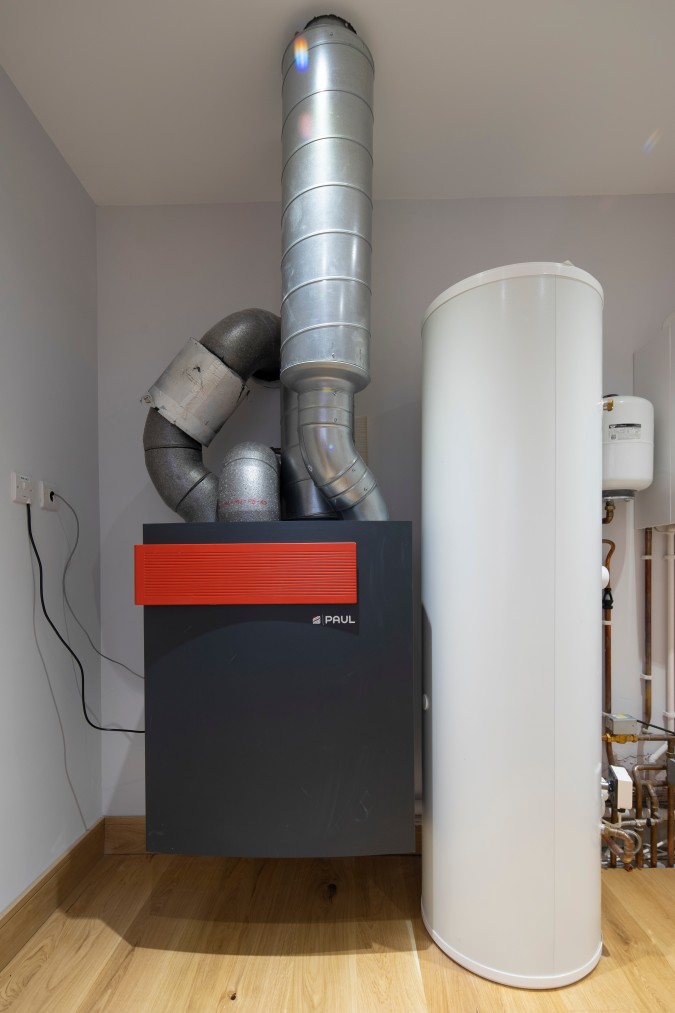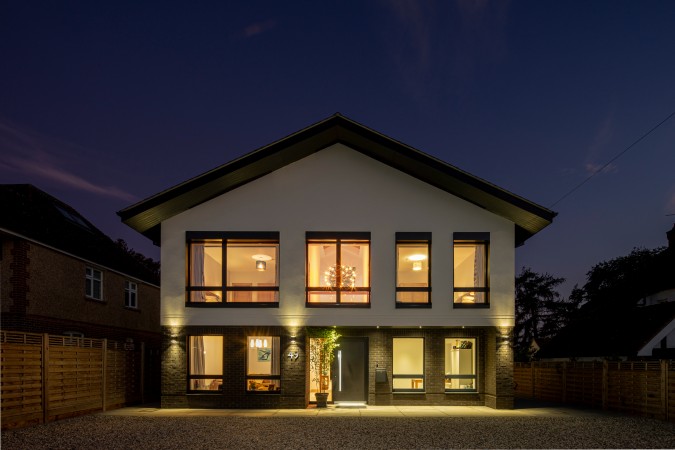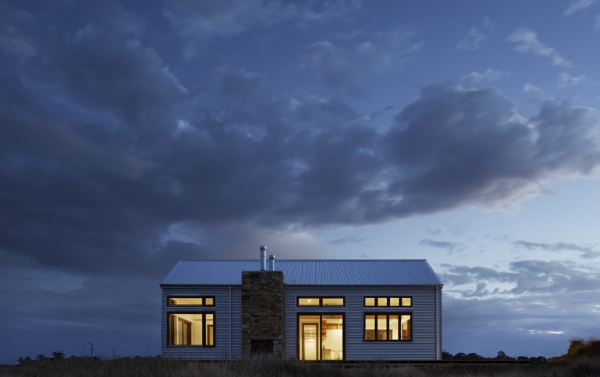Why do you need a mechanical ventilation heat recovery system (MVHR)?
Decamping from a cold, slightly mouldy living room to a stuffy bedroom or struggling to agree with fellow housemates on the perfect temperature. These are scenarios that we’ve all faced and inhabiting a property which isn’t meeting our comfort levels is all too common.
As a self-builder it’s likely you’re on a quest to create the most comfortable home possible. Many self-build homes these days feature the best ventilation to manage internal air quality and avoid condensation problems. Trickle vents or extractor fans are being replaced by Mechanical Ventilation Heat Recovery (MVHR) systems, which can provide excellent indoor air quality and also deliver heat throughout the home.
How does a MVHR system work?
In short, it provides constant fresh filtered air into a building while retaining most of the energy that has already been used in heating the building. This kind of system can extract and recycle any warmth in the outgoing air by transferring it into the new supply - optimising the climate in your home.
One of the main benefits of this system is improved air quality and the removal of allergens, such as pollen. By controlling the humidity levels you’ll also keep mould and fungus in check. The controlled ventilation also helps to eliminate bad odours and there’s no build-up of air pollution from sources inside the home like furniture or varnishes. When it comes to other comfort levels, you’ll find that installing an MVHR system means you won’t experience pesky draughts and there’s less noise from outside due to the windows remaining closed, which could result in undisturbed sleep.
But in order for a MVHR system to work effectively a new home needs to be suitably airtight. Why is air tightness so important? Well, if you want to achieve a thermally-efficient home then air tightness can stop heat from escaping and draughts from entering.
Achieving a reasonable level of airtightness in new buildings is a mandatory requirement of Building Regulations Part L. Air leakage is a significant cause of heat loss in a building and therefore a major contributor to energy efficiency. MVHR experts agree that this system requires a minimum air tightness of 5m3/(h m2) at 50 Pa to be most cost effective.
Building modern homes to Passivhaus standards is growing in the UK and a low air leakage rate is a must to meet the standard. Passivhaus might sound like an elaborate concept for a high end Grand Designs home but it’s far from the case. It’s about using the best insulation technology, efficient window and doors and effective heat preservation systems. All of this results in a comfortable, low energy building helping to reduce heating costs and emissions to a fraction of current standards. According to the Passivhaus Trust, following Passivhaus standards can help buildings to achieve a 75 per cent reduction in space heating requirements, compared to standard practice for UK new build.

Passivhaus combined with Saint-Gobain’s Multi Comfort concept, a way of looking after our comfort and wellbeing through the way we design our home using high performing materials, can create the best possible indoor comfort.
You can learn more about designing and building a comfortable home here.
To meet these standards and create a comfortable home, self-builder John Pryer installed an MVHR system in his four-bedroom home in Bedfordshire. After living in many different types of properties – new builds to Victorian semis – John understood all of the elements that created an uncomfortable home. He wanted an air-tight, energy-efficient home and he realised that installing an MVHR system was a solution to creating a ventilated, comfortable home.
His self-build is in-line with the standards set out by Saint-Gobain’s Multi Comfort home concept. These standards add to the Passivhaus requirements and go beyond these to ensure thermal, acoustic, visual and air quality performance.
John said: “The MVHR system provides fresh filtered air into a building while retaining the energy that has been used in heating the building. In our previous houses you’d have to open windows at night to cool the room down and find yourself waking up a bit chilly. We like the constant temperature.”

Where can you install it?
With all this in mind, where do you start when it comes to fitting an MVHR system? First, ideally you’ll employ a specialist engineer. An MVHR system is usually around the size of a large boiler and has four ducts – two running outside and two for internal extract and supply, as well as pipework that connects each of your rooms to the system. It can be wall-mounted in a utility room or loft space.
How much does it cost? Well, it all depends on the house and supplier you choose. For a medium-sized house (three to four bedrooms) the system itself is likely to cost upwards between £3,000-£8,000. The installation costs could be between £2,000-£4,000, depending on the room layout and the intricacy of installing the ducting. Little energy is needed to run an MVHR system, which results in a low running cost, and maintaining an air tight, thermally efficient home with an MVHR system will save on running costs for heating.
The only maintenance required is periodic filter changes. There are several filters which need to be changed to keep the air flowing properly. This all depends on where you live and how clean the air is. The filters keep your air clean, but are also needed to keep the system working properly.
You may be wondering if MVHR systems are noisy? Many do run quietly, especially within already quieter well-insulated buildings. You’ll find a range of MVHR models with various duct sizes on the market. The larger duct sizes can help to keep air speeds low, which minimise duct generated noise. You may want to specify primary attenuators (silencers) to reduce noise generated by the MVHR unit fans when talking to a supplier.
It can be confusing trying to choose the right MVHR system for your project as it’s still a relatively new technology in the UK, but always do your homework when it comes to selecting the right supplier.

Building an efficient self-build home
Learn more about building an efficient home with reduced running costs

Five ways to increase the sustainability of your build
Find out more from architect Gareth Boyd